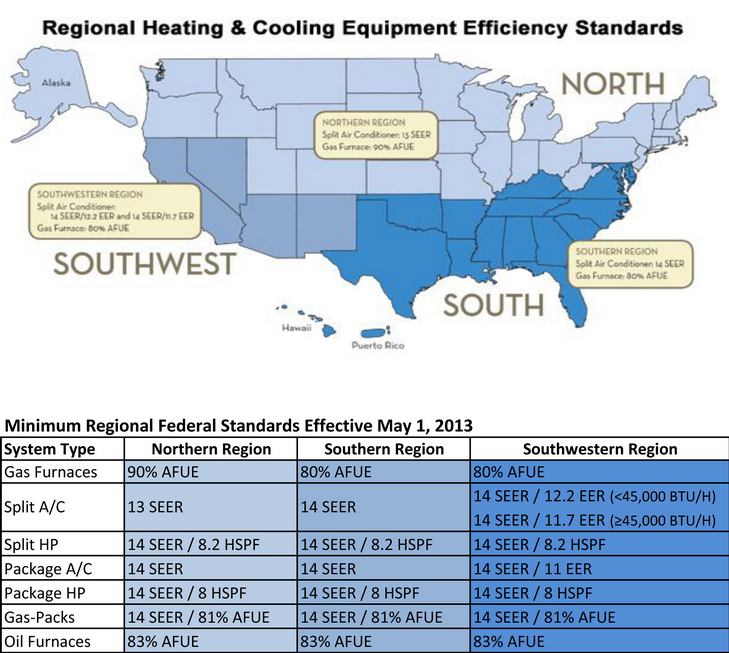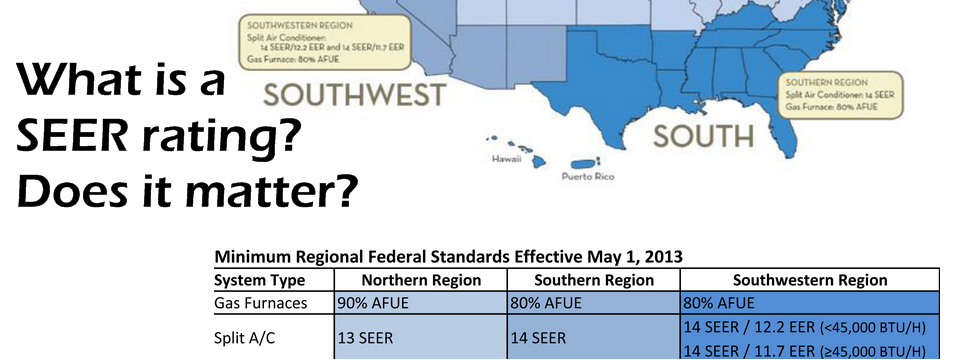Seasonal Energy Efficiency Ratio
The efficiency of central air conditioning systems is rated by a Seasonal Energy Efficiency Ratio (SEER). In general, the higher the SEER, the less electricity the system needs to do its job.
SEER is a mathematically determined ratio of the total cooling capacity during normal periods of operation (not to exceed 12 months) divided by the total electric energy input during the same time period. More detail on the SEER calculation can be obtained inAHRI Standard 210/240.
Great strides have been made in the last 10 years to increase the efficiency of new air conditioners and heat pumps. SEER ratings for air conditioning and air-source heat pump systems manufactured today range from 13 SEER to 24 SEER, with the highest numbers indicating the most efficient units that offer the most energy savings year after year.
The government in 1992 established the minimum seasonal energy efficiency standard for units manufactured in the United States at 10 SEER. The minimum SEER value changed again on January 23, 2006 to 13 SEER.
AHRI lists the certified energy efficiency ratings for specific equipment in its online AHRI Directory of Certified Product Performance. To obtain that certified efficiency rating, though, it is important that a contractor install a system properly. Only certified matched systemsare listed in the directory. Ask your contractor for either an AHRI Certified Reference Number or a AHRI Certificate of Product Ratings to confirm that the system being installed in your home is properly matched to achieve its certified efficiency rating.
UPDATE:
Effective May 1, 2013, the U.S. Department of Energy (DOE) will enforce a new standard. A minimum requirement of 14 SEER must be met. All of the new requirements are listed below.


